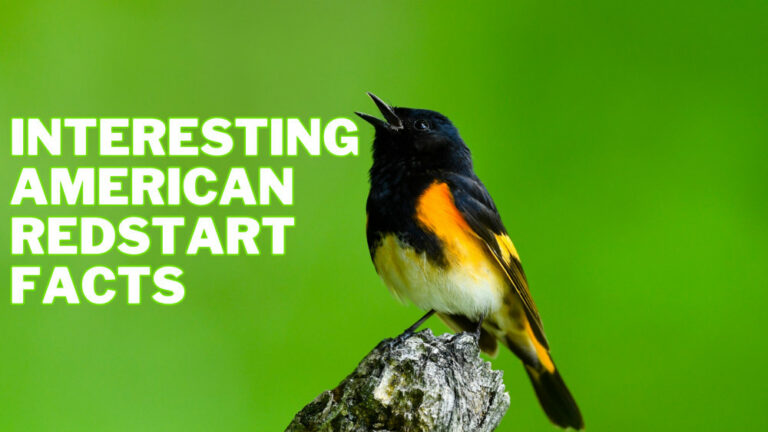Discover The Diversity: Species Of Owls In The World
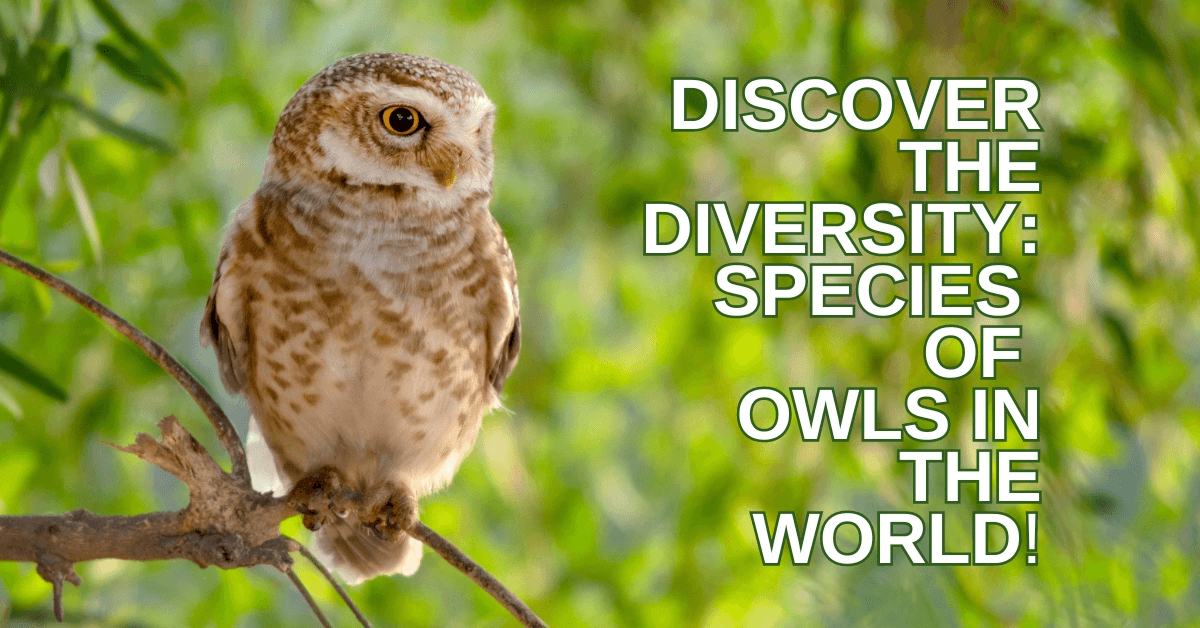
Discover The Diversity: Species Of Owls In The World
In the dim twilight glow, a ghostly figure silently glides through the forest, its keen eyes scanning the ground for movement.
With feathers designed for stealth and talons built for precision, owls are nature's silent hunters, captivating our imagination with their mysterious ways.
Join me on a journey to discover the diversity of owl species worldwide, from the tiny Elf Owl to the majestic Eurasian eagle owl.
Explore their unique adaptations, hunting techniques, and the myths and legends surrounding these nocturnal creatures for centuries.
Embark on an adventure into the enchanting world of owls, where every hoot and flutter tells a story of survival and wonder.
1. Barn Owl (Tyto alba)
The Barn Owl (Tyto alba) is a striking nocturnal predator renowned for its heart-shaped facial disc, muted plumage, and silent flight.
Widely distributed across every continent except Antarctica, these owls favour open habitats such as grasslands, farmlands, and marshes, where they hunt small mammals like mice and voles.
Barn Owl populations are resilient, yet they still face several challenges, such as habitat loss from urbanization, pesticide usage, and intensified agriculture.
Efficient nocturnal predation is made possible by their unique capacity to hunt in near silence, which is made possible by serrated wing feathers that lessen turbulence.
Conservation initiatives that prioritize protecting nesting places and lowering human-caused mortality are essential for this iconic species to survive.
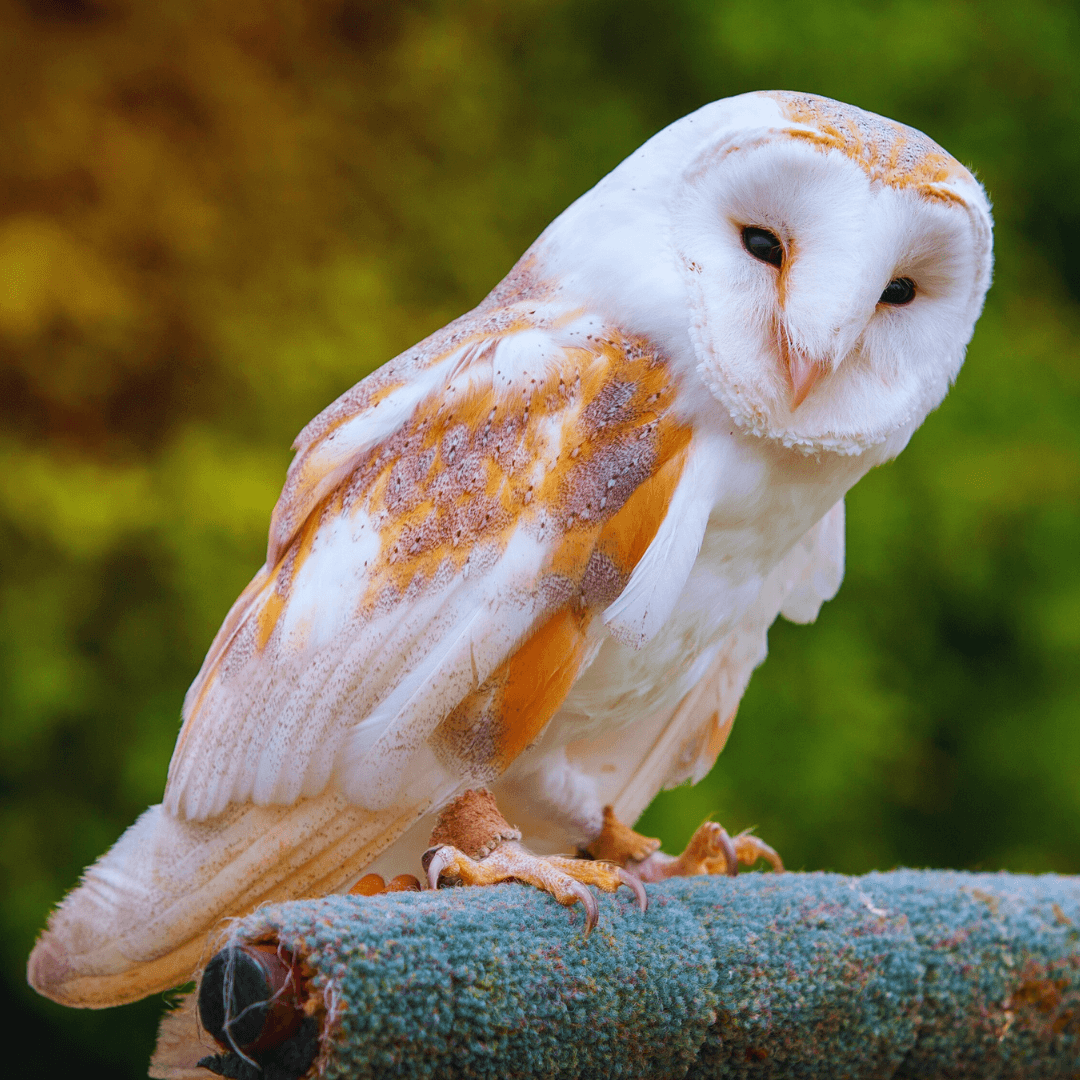
2. Great Horned Owl (Bubo virginianus)
With its intimidating height, noticeable ear tufts, and penetrating yellow eyes, the Great Horned Owl (Bubo virginianus) draws attention.
Found throughout the Americas, from the Arctic to South America, these apex predators inhabit diverse habitats, including forests, deserts, and urban areas.
Equipped with powerful talons and keen hearing, they prey on many animals, including small rodents, other birds, and skunks.
Despite their adaptability, Great Horned Owls face threats such as habitat loss, vehicle collisions, and illegal hunting.
Their exceptional ability to hunt in low light conditions and their distinctive hooting calls contribute to their success as nocturnal hunters.
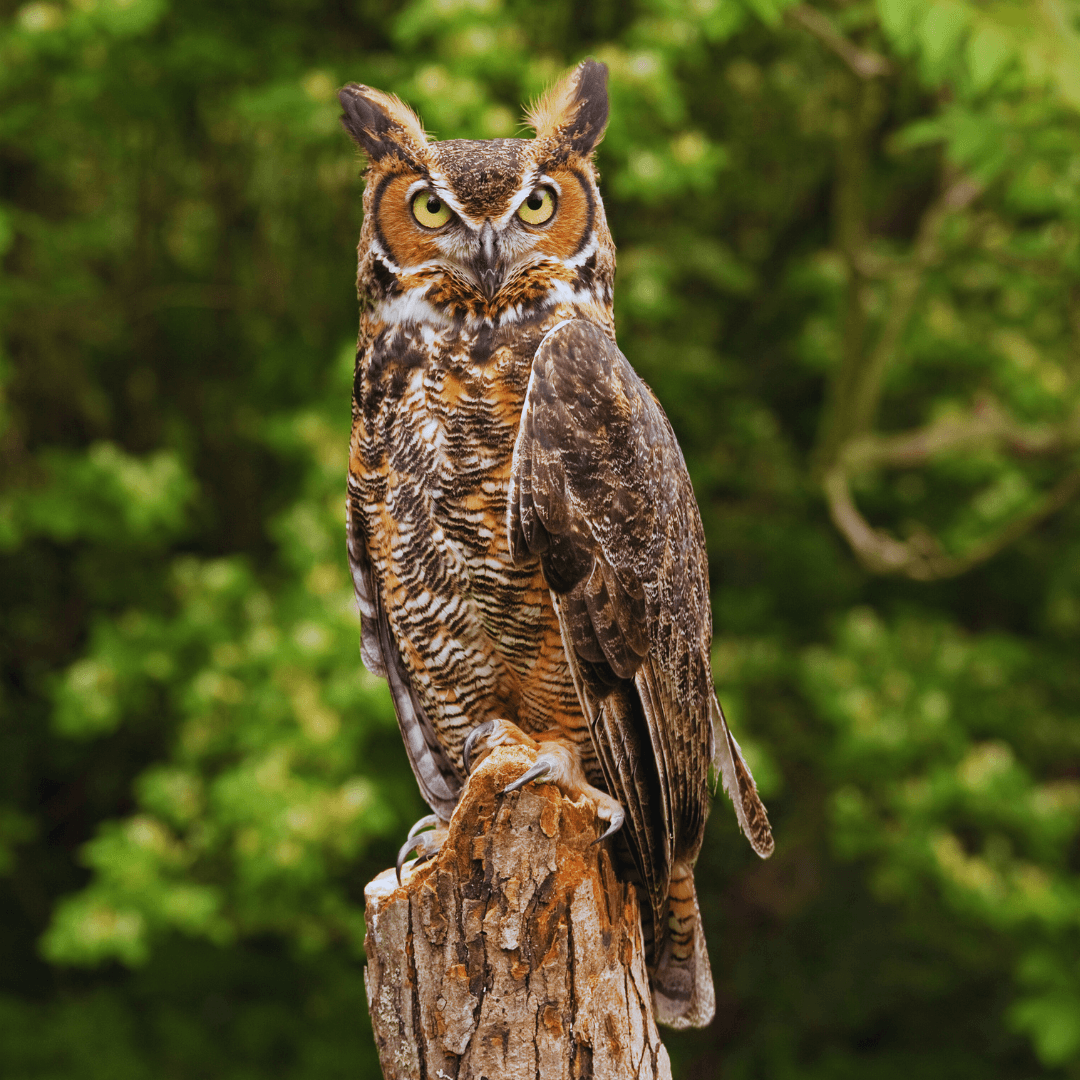
3. Snowy Owl (Bubo scandiacus)
The Snowy Owl (Bubo scandiacus), a beautiful species of owl, epitomizes the stunning white plumage and piercing yellow eyes.
These majestic raptors symbolize the frozen north, inhabiting tundra regions across the Arctic Circle. Admirably adapted to their harsh environment,
Snowy Owls possess thick feathers for insulation against extreme cold and powerful talons for capturing prey.
Unlike many owl species, they are diurnal hunters, taking advantage of the continuous daylight during Arctic summers to hunt lemmings and other small mammals.
However, climate change significantly threatens Snowy Owl populations, disrupting their prey availability and nesting habitats.
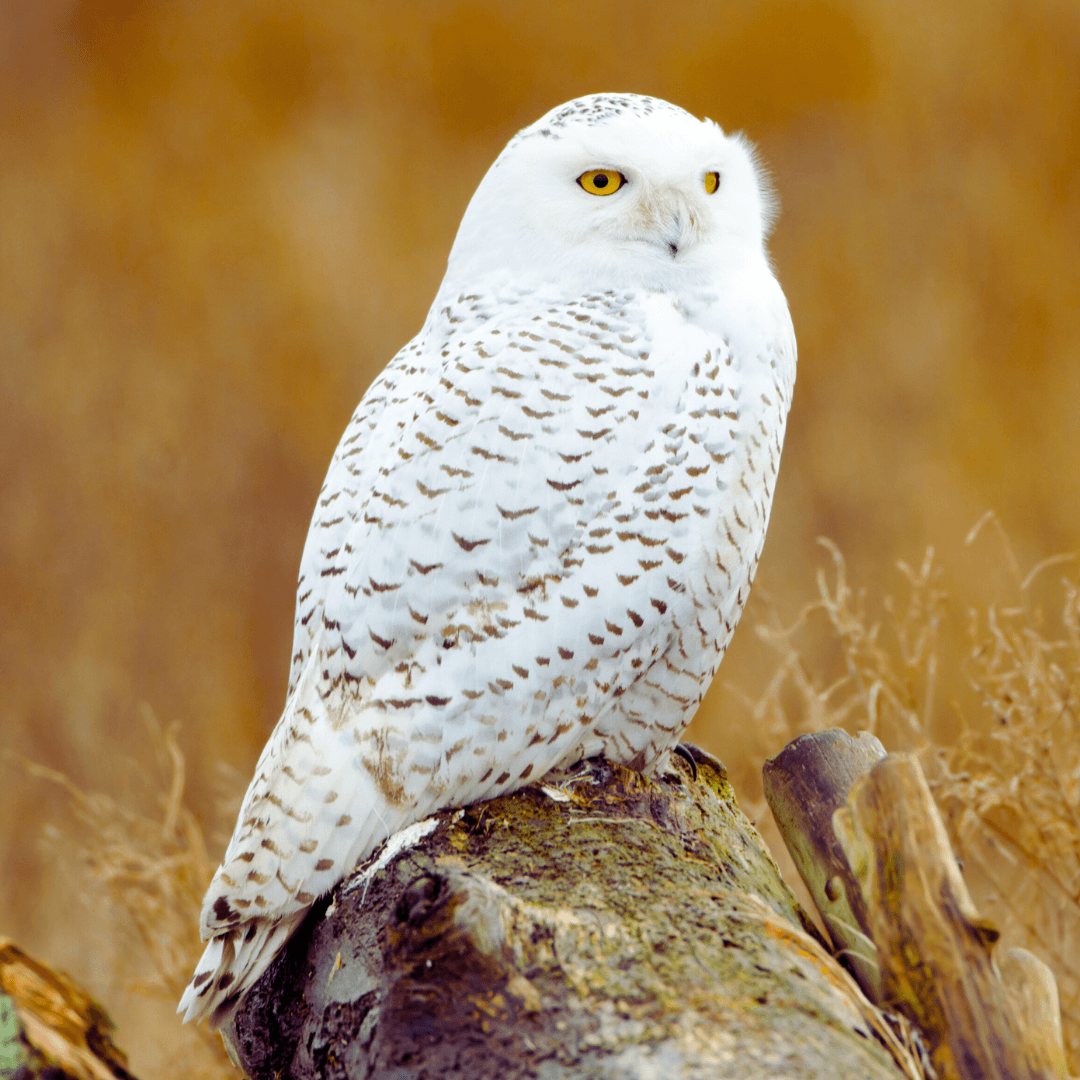
4. Eastern Screech Owl (Megascops asio)
The Eastern Screech Owl (Megascops asio) embodies stealth and adaptability in the woodlands of North America.
Despite its diminutive size, this owl species boasts remarkable camouflage, blending seamlessly with tree bark thanks to its mottled gray or reddish-brown plumage. Its piercing yellow eyes and ear tufts add to its distinctive appearance.
Primarily nocturnal, the Eastern Screech Owl is a skilled hunter of small mammals, birds, and insects, using its sharp talons and hooked beak to capture prey precisely.
Nesting in tree cavities or nest boxes, these owls are often heard rather than seen, emitting haunting trills and whinnies that echo through the night. While adaptable to various habitats, they face habitat loss and urbanization threats.
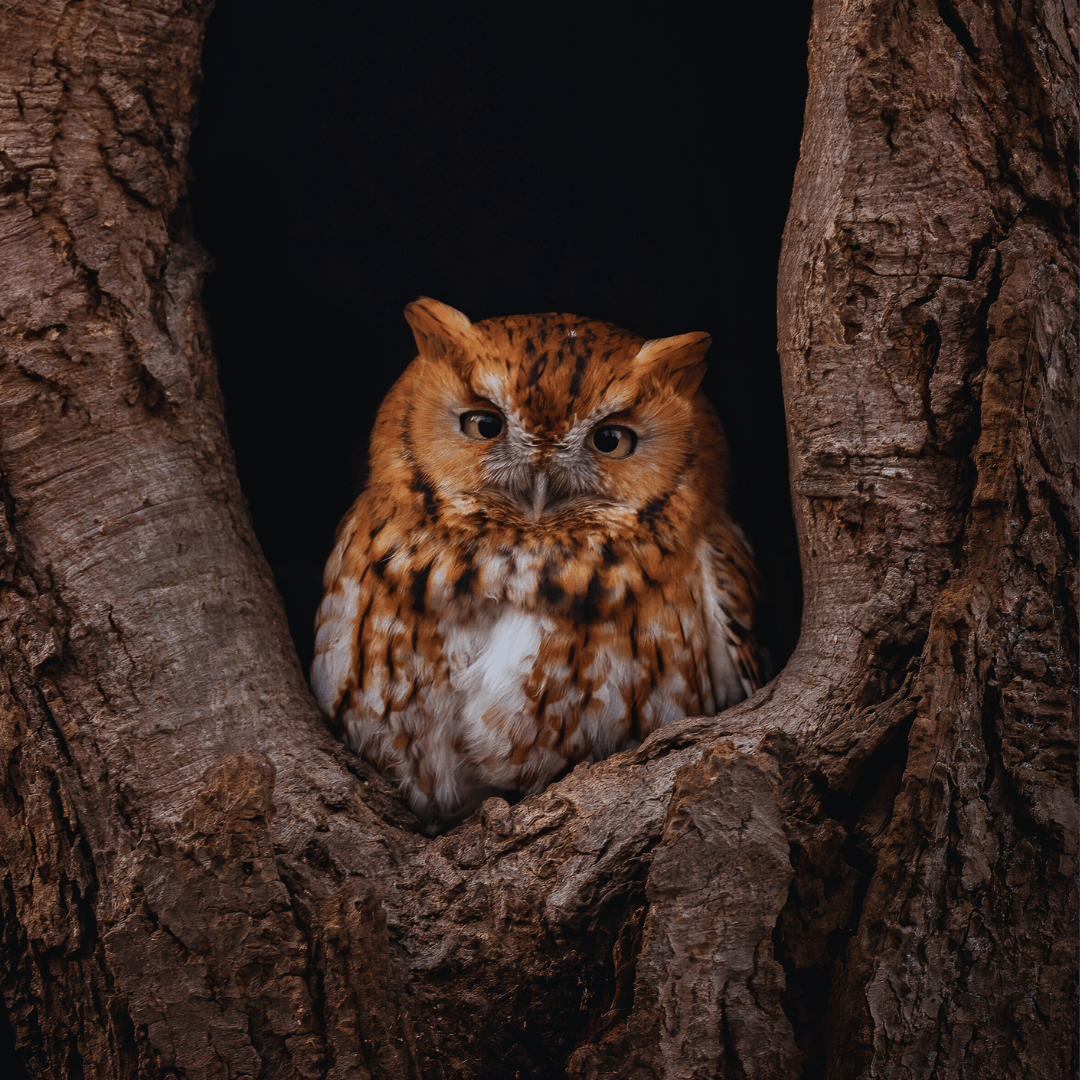
5. Eurasian Eagle-Owl (Bubo bubo)
The Eurasian Eagle-Owl (Bubo bubo) commands attention with its imposing size and majestic presence across Europe and Asia.
As one of the largest owl species in the world, it possesses a wingspan of up to six feet and striking orange eyes set in a prominent facial disk.
These formidable predators inhabit diverse habitats, from rocky cliffs and mountains to forests and open plains.
Eurasian eagle owls, highly recognized for their formidable claws and keen eyesight, feed on diverse fauna, such as small mammals, birds, and even larger prey, such as juvenile deer and hares.
Despite their adaptability, they face threats such as habitat loss, persecution, and collisions with vehicles and power lines.
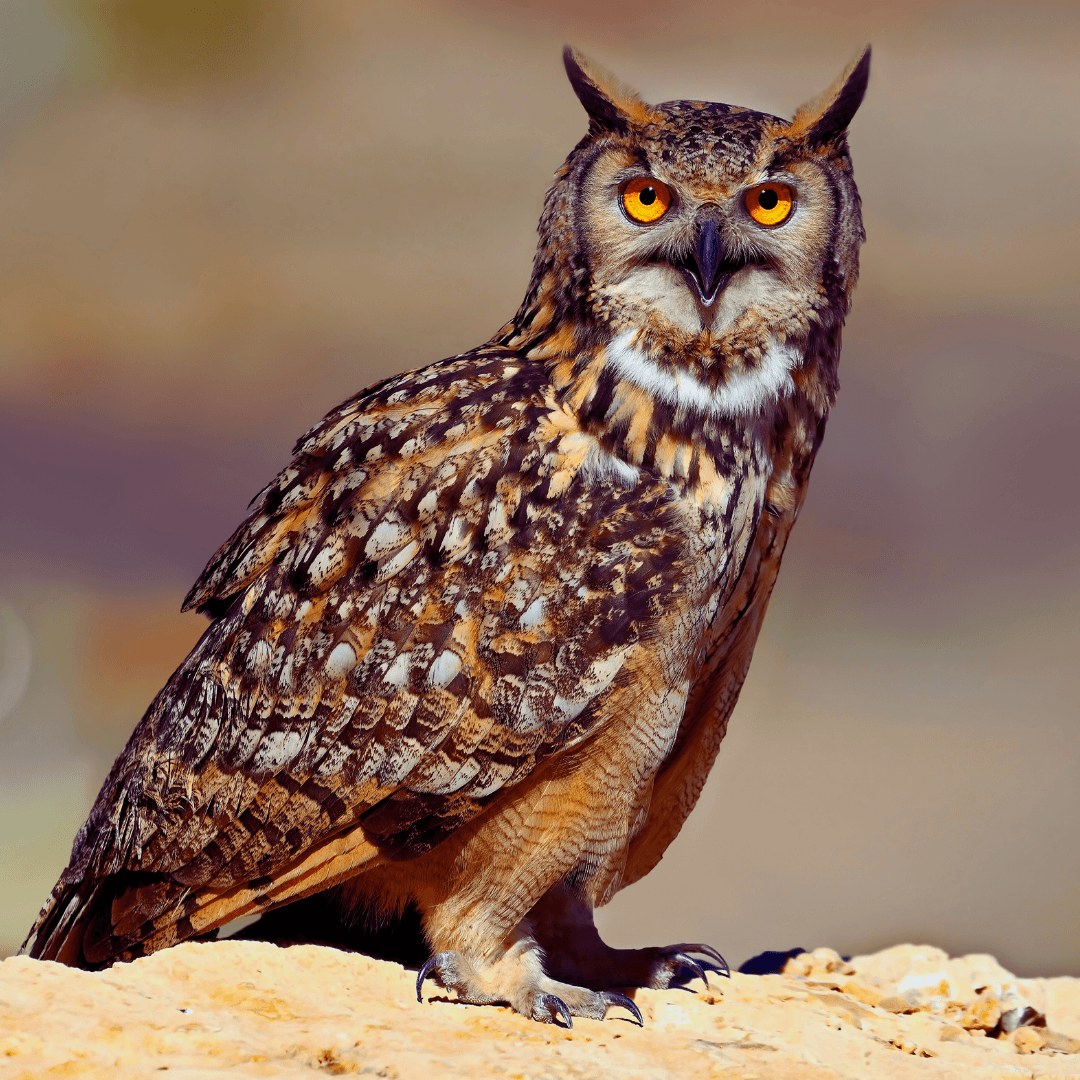
6. Northern Saw-Whet Owl (Aegolius acadicus)
The Northern Saw-whet Owl (Aegolius acadicus) may be small in stature, but it boasts a big presence in the forests of North America.
With its endearing appearance characterized by large, yellow eyes and a rounded head, this owl species captivates bird enthusiasts and researchers alike.
Preferring dense coniferous and mixed woodlands as its habitat, the Northern Saw-whet Owl is primarily nocturnal and hunts small rodents, insects, and occasionally small birds.
Despite its secretive nature, its high-pitched, repetitive “tooting” call can be heard during the breeding season, aiding in its identification.
Despite being relatively widespread, these owls face threats such as habitat loss due to logging urbanization and collisions with vehicles.
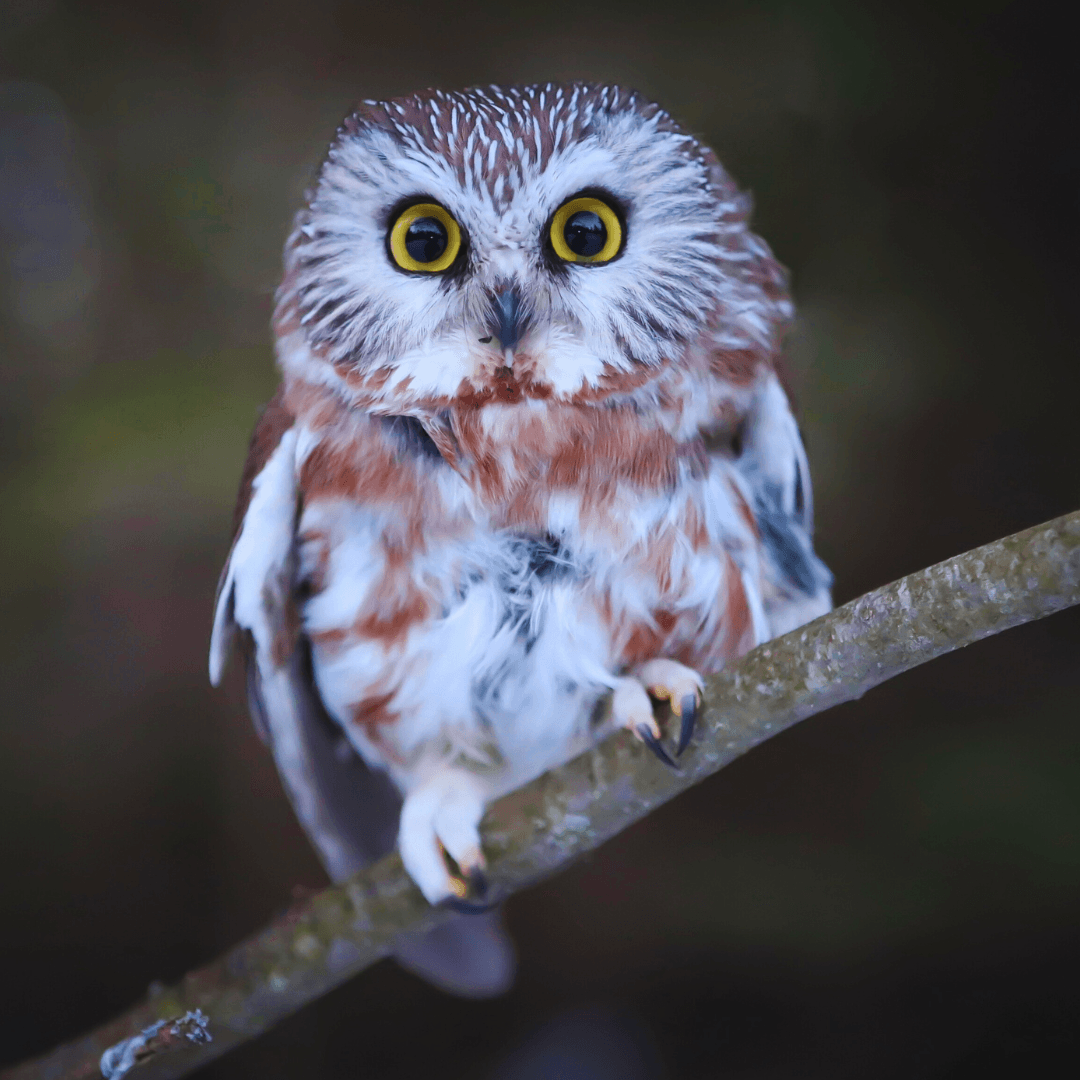
7. Elf Owl (Micrathene whitney)
The Elf Owl (Micrathene whitneyi) captivates as a tiny species of owls in the world population of the southwestern United States and Mexico.
As the world's smallest owl species, its petite frame and adorable demeanour make it unforgettable.
Sporting a round head, large yellow eyes, and cryptic gray-brown plumage, the Elf Owl thrives in arid and semi-arid habitats like deserts, canyons, and scrublands.
A proficient nocturnal hunter, it preys on insects, spiders, scorpions, and occasionally small vertebrates. Nesting within cavities of saguaro cacti or dead trees, these owls master the art of camouflage.
Though not currently under significant threat, conservation efforts to safeguard their habitats from development and preserve nesting sites remain vital for sustaining robust populations of this delightful owl species.

8. Spotted Owl (Strix occidentalis)
The Spotted Owl (Strix occidentalis) epitomizes the mystique of old-growth forests in the western United States and Mexico.
Recognized by its dark eyes and mottled brown plumage adorned with distinctive white spots, this owl species is emblematic of mature coniferous and mixed woodlands.
Its preference for dense forest habitats, particularly those with large trees and complex canopy structures, underscores its reliance on intact ecosystems for nesting and hunting.
Unlike many owl species, the Spotted Owl is predominantly nocturnal, preying on small mammals such as rodents and flying squirrels.
However, its populations have faced significant declines due to habitat loss from logging, wildfire, and habitat fragmentation, compounded by competition with the invasive Barred Owl.
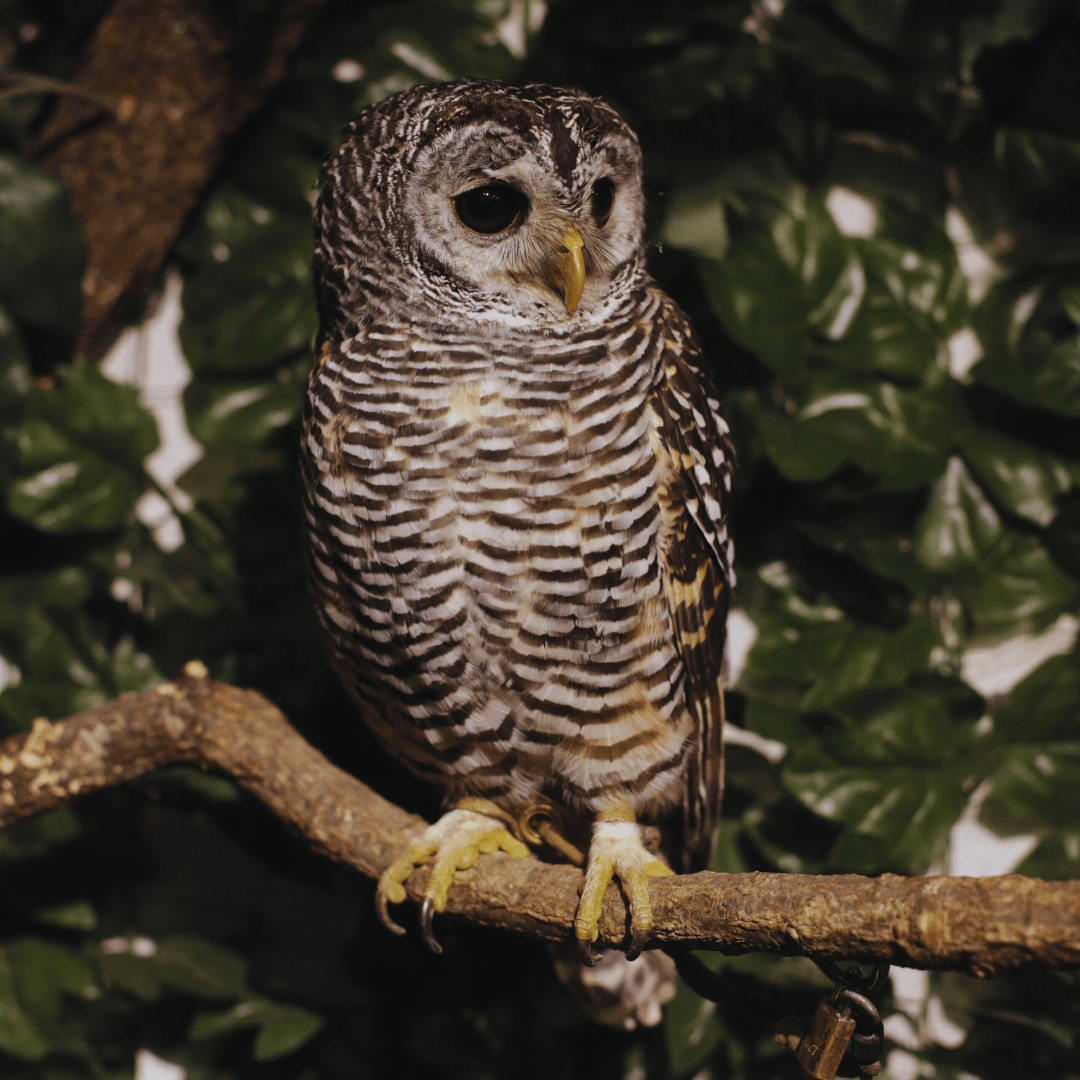
9. Burrowing Owl (Athene cunicularia)
The Burrowing Owl (Athene cunicularia) is a charismatic and distinctive owl species native to open grasslands, deserts, and agricultural areas across the Americas.
Renowned for its unique nesting behaviour, this owl species excavates burrows in the ground, often repurposing abandoned rodent burrows for shelter.
With its long legs and compact body, the Burrowing Owl exhibits a terrestrial lifestyle unusual among owls. It frequently perches near its burrow entrance to watch for predators and prey.
Unlike many owl species, it is active day and night, hunting diverse prey, including insects, small mammals, and reptiles.
Despite their versatility, Burrowing Owls are threatened by habitat loss brought on by agricultural development, urbanization, and grassland conversion.
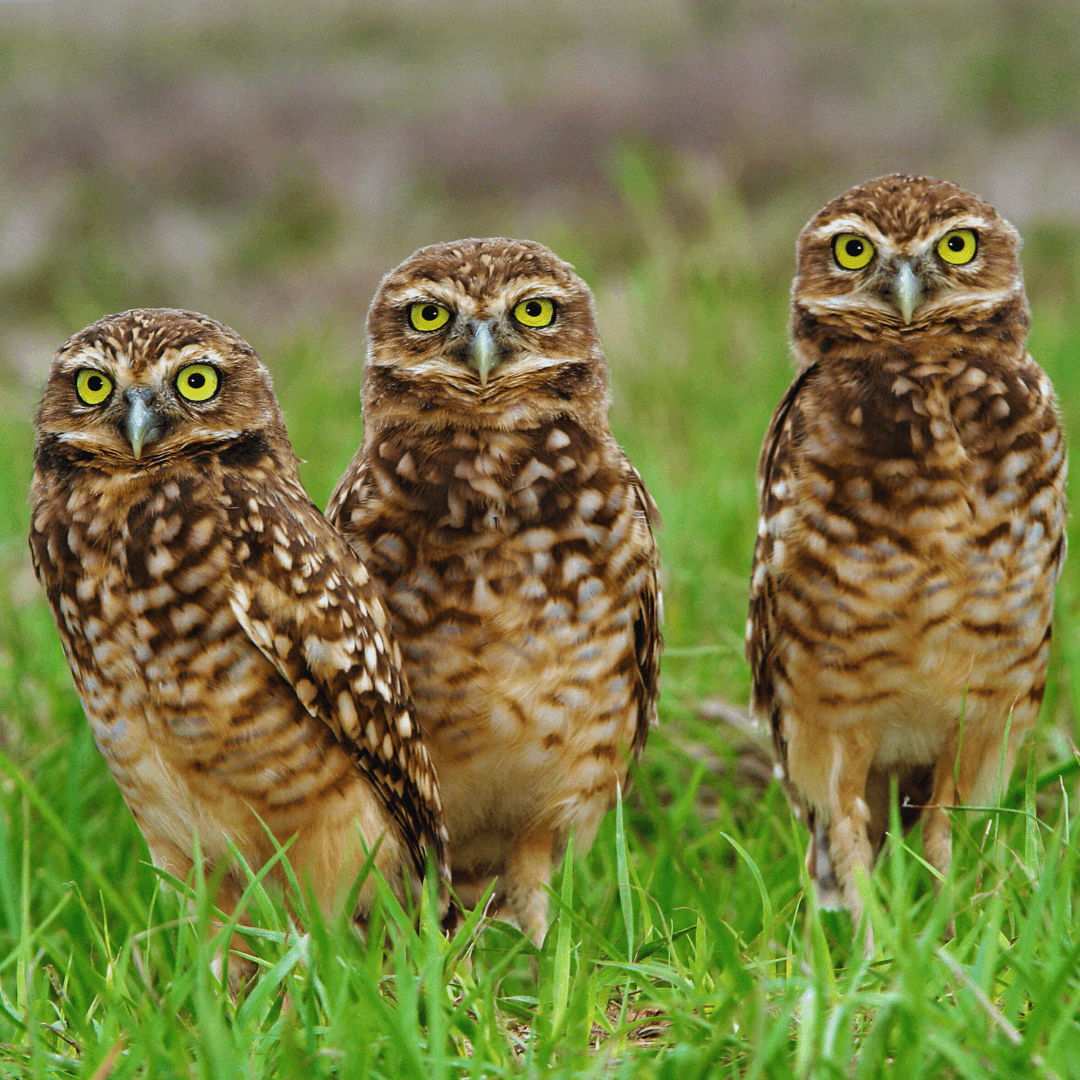
10. Long-Eared Owl (Asio otus)
A symbol of grace and stealth in the woodlands and forests of Europe, Asia, North America, and portions of North Africa is the Long-eared Owl (Asio otus).
Named for its prominent ear tufts rather than its actual ear length, this owl species possesses a slender body and intricate mottled plumage that provides exceptional camouflage against tree bark.
Preferring dense woodlands and coniferous forests, the Long-eared Owl roosts during the day in thick foliage, relying on its cryptic appearance to evade detection.
At night, it emerges to hunt small mammals such as mice, voles, and shrews, using its keen hearing to pinpoint prey in the darkness.
Long-eared owl populations are threatened by habitat loss due to urbanization and deforestation despite their extensive range.

11. Short-Eared Owl (Asio flammeus)
The Short-eared Owl (Asio flammeus) is a captivating species of owl renowned worldwide for its distinctive appearance and aerial prowess in open habitats.
Named for its short, often barely visible ear tufts, this owl possesses a cryptic mottled plumage ideal for blending into its grassland and marshland habitats.
Unlike many other owl species, the Short-eared Owl is diurnal or crepuscular. It uses daylight hours to hunt for its preferred prey, small rodents, birds, and insects.
With its buoyant, moth-like flight and acute hearing, it gracefully navigates open spaces for food.
However, the Short-eared Owl faces threats from habitat loss due to agriculture, urbanization, land conversion, and disturbances to nesting sites.
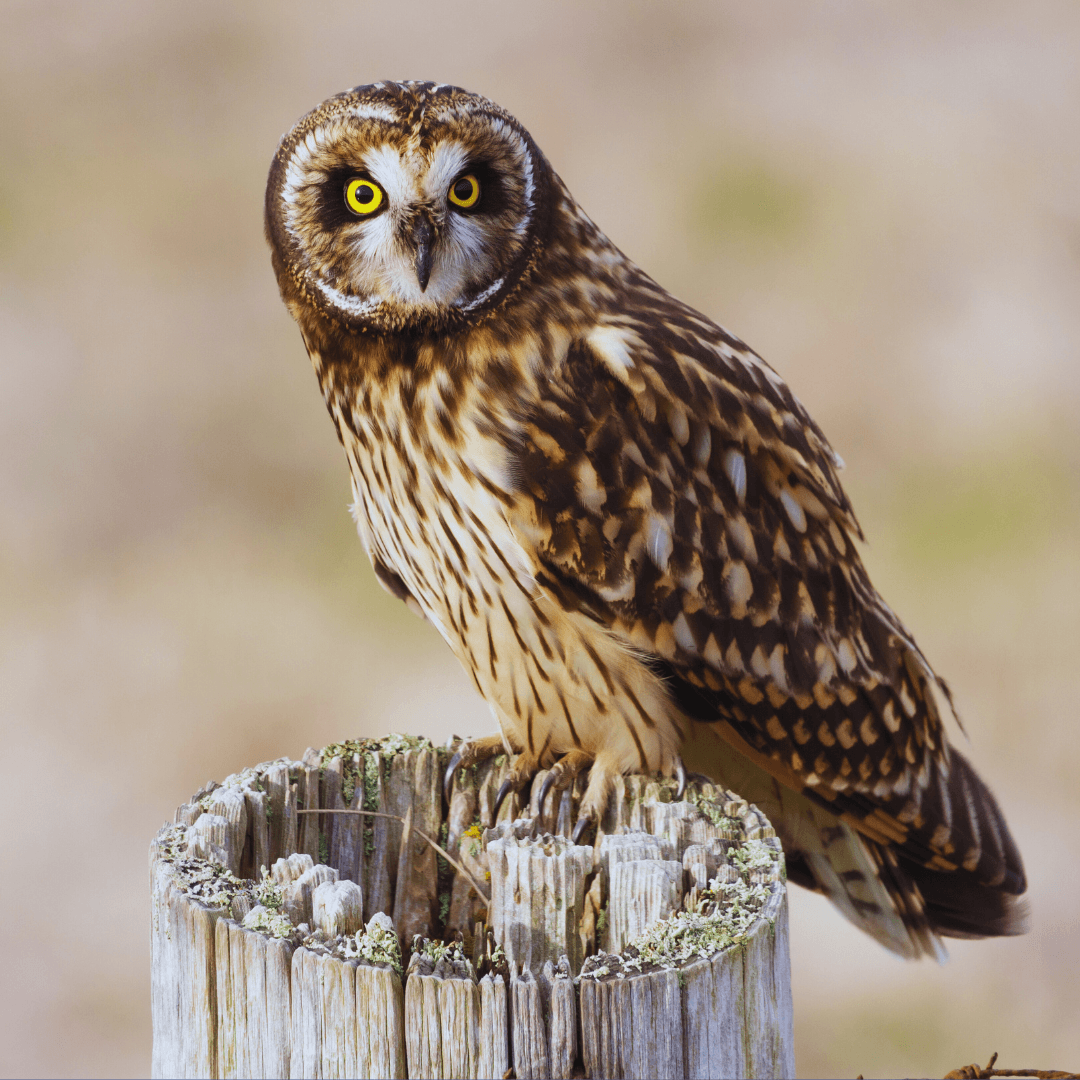
12. Tawny Owl (Strix aluco)
The Tawny Owl (Strix aluco) exudes mystery and elegance in the woodlands of Europe and parts of Asia.
With its rounded head, dark eyes, and cryptic reddish-brown plumage, this owl species is perfectly adapted for life among dense forests and wooded areas.
The Tawny Owl is a nocturnal bird of prey that uses its strong talons and acute senses to hunt tiny mammals, birds, and insects.
Renowned for its haunting hooting calls, particularly during the breeding season, it plays a prominent role in folklore and cultural traditions throughout its range.
Despite its adaptability to human-altered landscapes, the Tawny Owl faces habitat loss, fragmentation, and vehicle collision threats.

13. Barred Owl (Strix varia)
The Barred Owl (Strix varia) is a charismatic and adaptable owl species found in forests across North America.
Distinguished by its dark eyes, mottled brown plumage with horizontal barring, and lack of ear tufts, the Barred Owl's distinctive appearance sets it apart from other owl species.
It hunts various prey, including small mammals, birds, amphibians, and insects. Being nocturnal by nature, it uses its strong talons and excellent vision to grab its prey easily.
Unlike others, the Barred Owl is known for its distinctive “Who cooks for you? Who cooks for you-all?” call.
Despite its adaptability to various forest habitats, the Barred Owl faces threats from habitat loss due to logging, urbanization, and fragmentation.
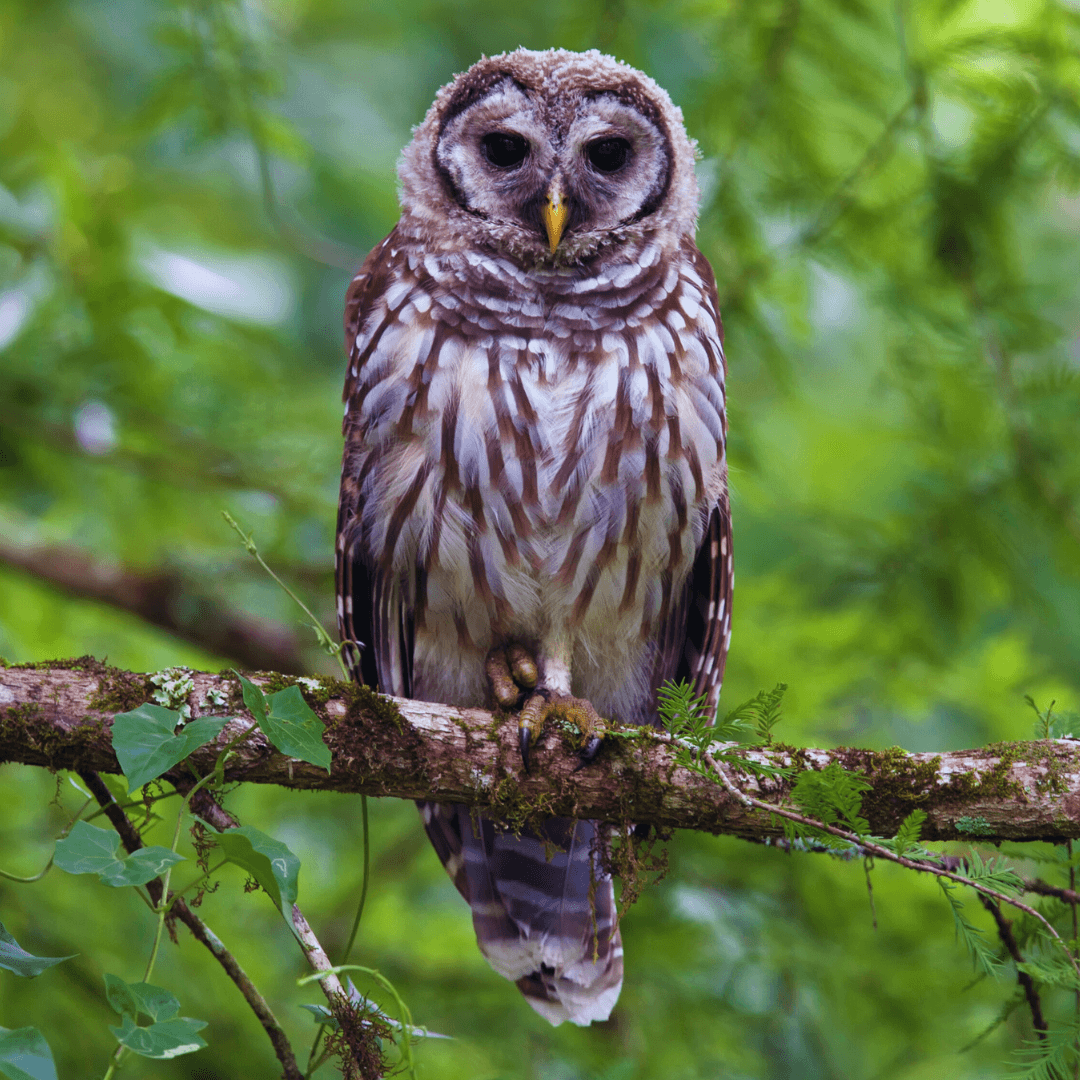
14. Northern Pygmy Owl (Glaucidium californicum)
The Northern Pygmy Owl (Glaucidium californicum) may be small, but it possesses a big personality in the forests of western North America.
With its compact body, round head, and piercing yellow eyes, this owl species exudes charm and intrigue.
Found in coniferous forests, mixed woodlands, and chaparral habitats, the northern pygmy owl is primarily diurnal. During daylight hours, it hunts small birds, rodents, and insects.
Despite its diminutive stature, it is a formidable predator, using stealth and agility to ambush prey from concealed perches.
Renowned for its high-pitched, whistled call resembling a bouncing ball, the Northern Pygmy Owl adds a touch of whimsy to the forest canopy.
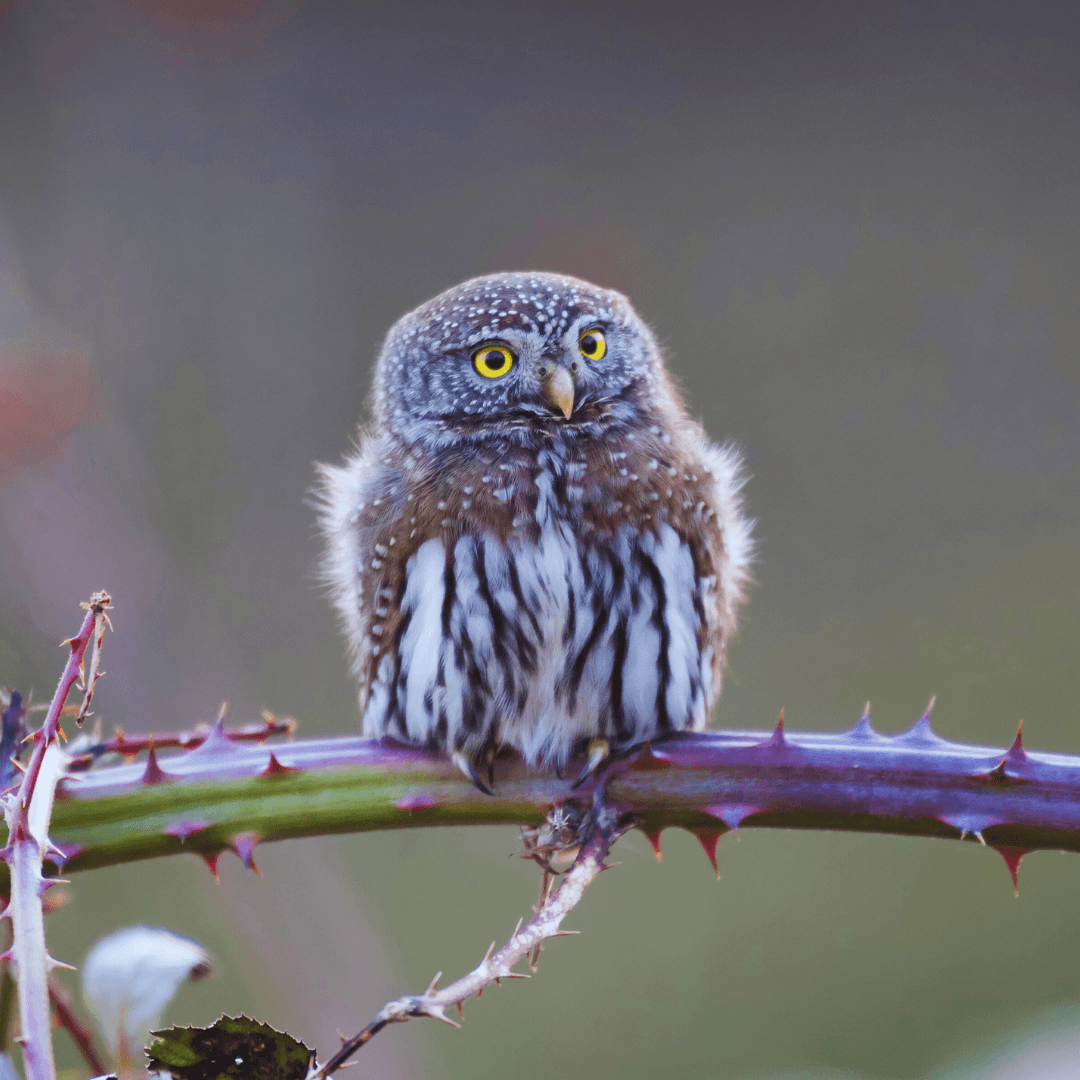
15. Spectacled Owl (Pulsatrix perspicillata)
The Spectacled Owl (Pulsatrix perspicillata) is a majestic and enigmatic species of owl found in the dense forests of Central and South America.
Named for the distinct white facial disks surrounding its dark eyes, which give it the appearance of wearing spectacles, this owl species commands attention with its striking features.
Preferring tropical rainforests and montane cloud forests, the Spectacled Owl is predominantly nocturnal. It hunts small mammals, birds, reptiles, and amphibians from concealed perches in the canopy.
Renowned for its deep, resonant hooting calls that echo through the night, it plays a prominent role in the folklore and mythology of indigenous cultures throughout its range.
This Spectacled Owl faces threats from habitat loss due to deforestation, logging, and agricultural expansion.
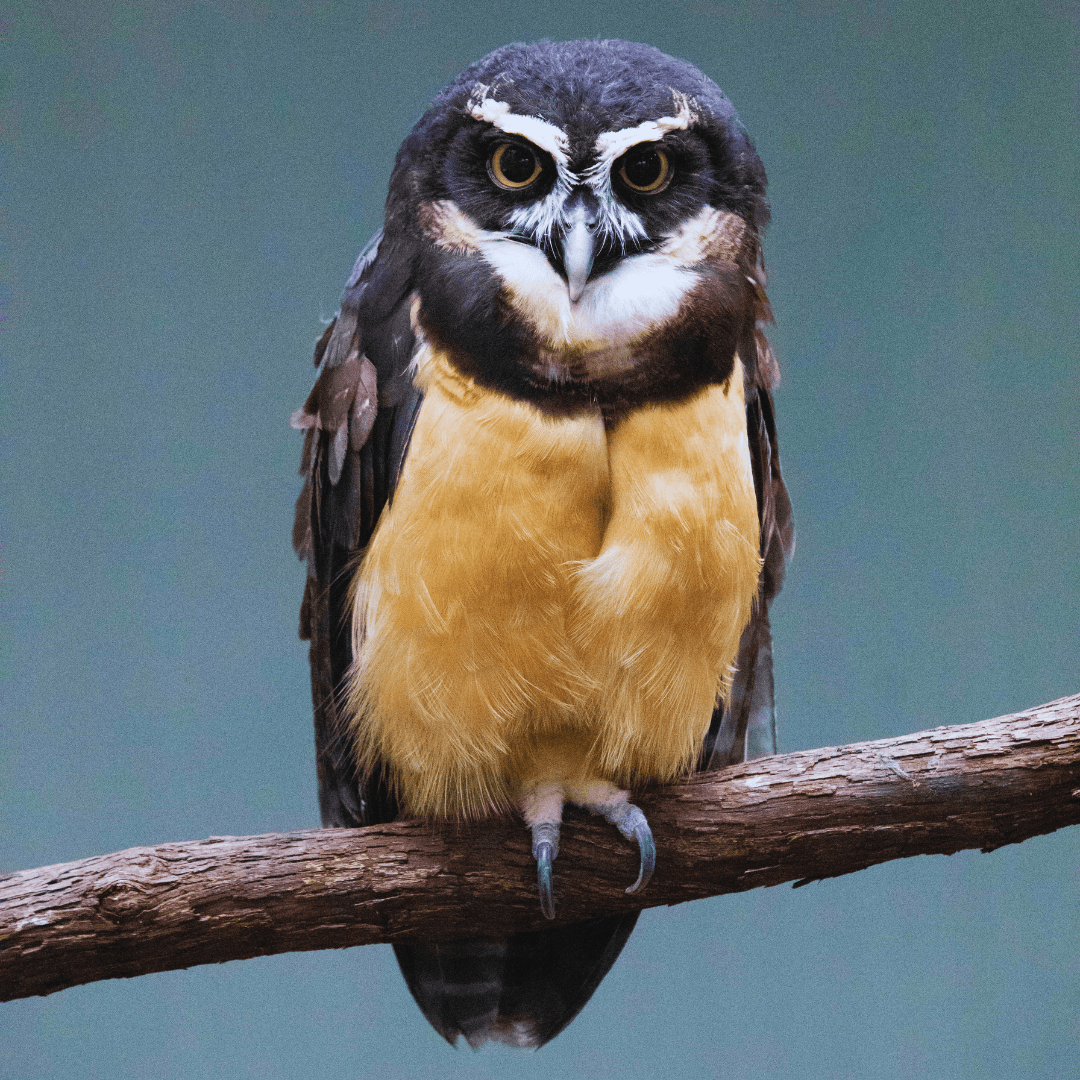
16. Western Screech Owl (Megascops kennicottii)
The fascinating nocturnal predator Western Screech Owl (Megascops kennicottii) inhabits various habitats across western North America.
With its small size, mottled gray-brown plumage, and distinct ear tufts, this owl species possesses a charming appearance that endears it to bird enthusiasts.
Preferring diverse habitats, including woodlands, riparian areas, and suburban neighbourhoods, the Western Screech Owl is an adaptable hunter that preys on insects, small mammals, birds, and reptiles under darkness.
Renowned for its haunting trill-like calls that echo through the night, it adds an enchanting presence to the nocturnal landscape.
Despite its adaptability, the Western Screech Owl is vulnerable to habitat loss due to urbanization, deforestation, and habitat fragmentation.

17. Great Gray Owl (Strix nebulosa)
The Great Gray Owl (Strix nebulosa) symbolizes the vast boreal forests of North America, Europe, and Asia.
Its imposing size, impressive wingspan, and striking facial disk bordered by dark feathers mesmerize observers.
Preferring dense coniferous forests and open meadows, it hunts adeptly at dawn and dusk for small mammals like voles, mice, and lemmings.
Renowned for its silent flight and sharp vision, it effortlessly detects prey concealed beneath snow cover. Despite its resilience to cold climates, habitat loss from logging, wildfires, and climate change poses significant threats.
Preserving intact boreal forests and minimizing human disruptions is essential for safeguarding the survival of this majestic owl species and the delicate ecosystems it calls home.

18. Flammulated Owl (Psiloscops flammables)
The Flammulated Owl (Psiloscops flammeolus), found in western North American forests, captivates with its small size, unassuming appearance, and piercing yellow eyes.
Preferring mature coniferous forests and oak woodlands, the Flammulated Owl is primarily nocturnal, emerging at dusk to hunt for insects such as moths, beetles, and crickets.
Its distinctive song, a soft series of whistled notes reminiscent of a flickering flame, adds a magical presence to the nocturnal forest.
However, habitat loss due to logging, wildfire, and urbanization poses significant threats. Conservation efforts focused on preserving mature forests and minimizing human disturbances are essential for ensuring the continued survival of this charming owl species in its diverse range of habitats.
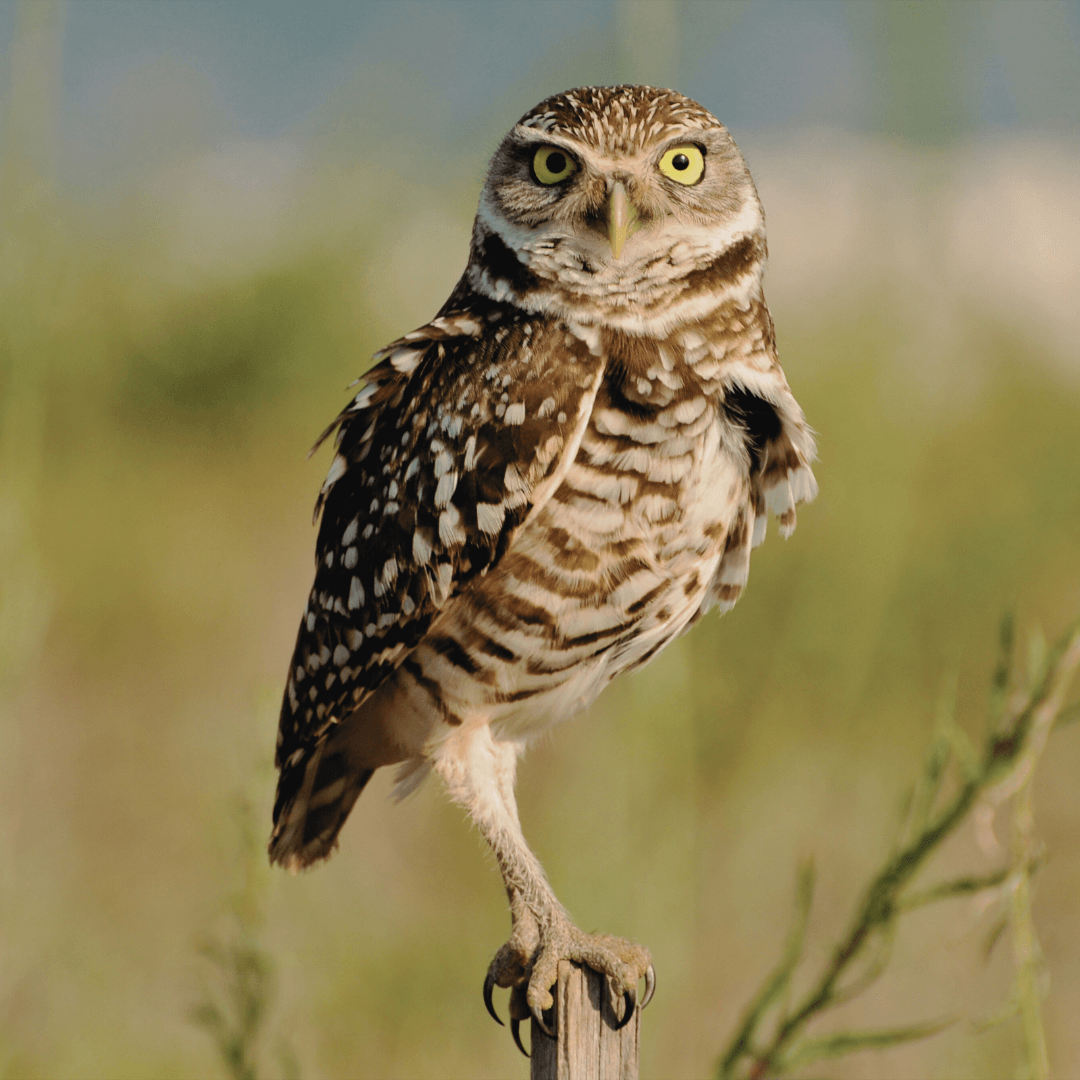
19. Pearl-Spotted Owlet (Glaucidium perlatum)
The Pearl-spotted Owlet (Glaucidium perlatum) thrives in sub-Saharan Africa's savannas and open woodlands. Its compact size, distinct white eyebrows, and vibrant yellow eyes make it instantly recognizable.
Preferring habitats with scattered trees and shrubs, it hunts under the veil of night, preying on insects, small mammals, birds, and reptiles. Its melodious call, a soft medley of whistles and trills, embellishes the African night.
Despite its adaptability, habitat loss from agricultural expansion and deforestation threatens its survival.
Conservation endeavours targeting savanna preservation and minimizing human disturbances are vital for safeguarding this enchanting owl's presence across its varied habitats.
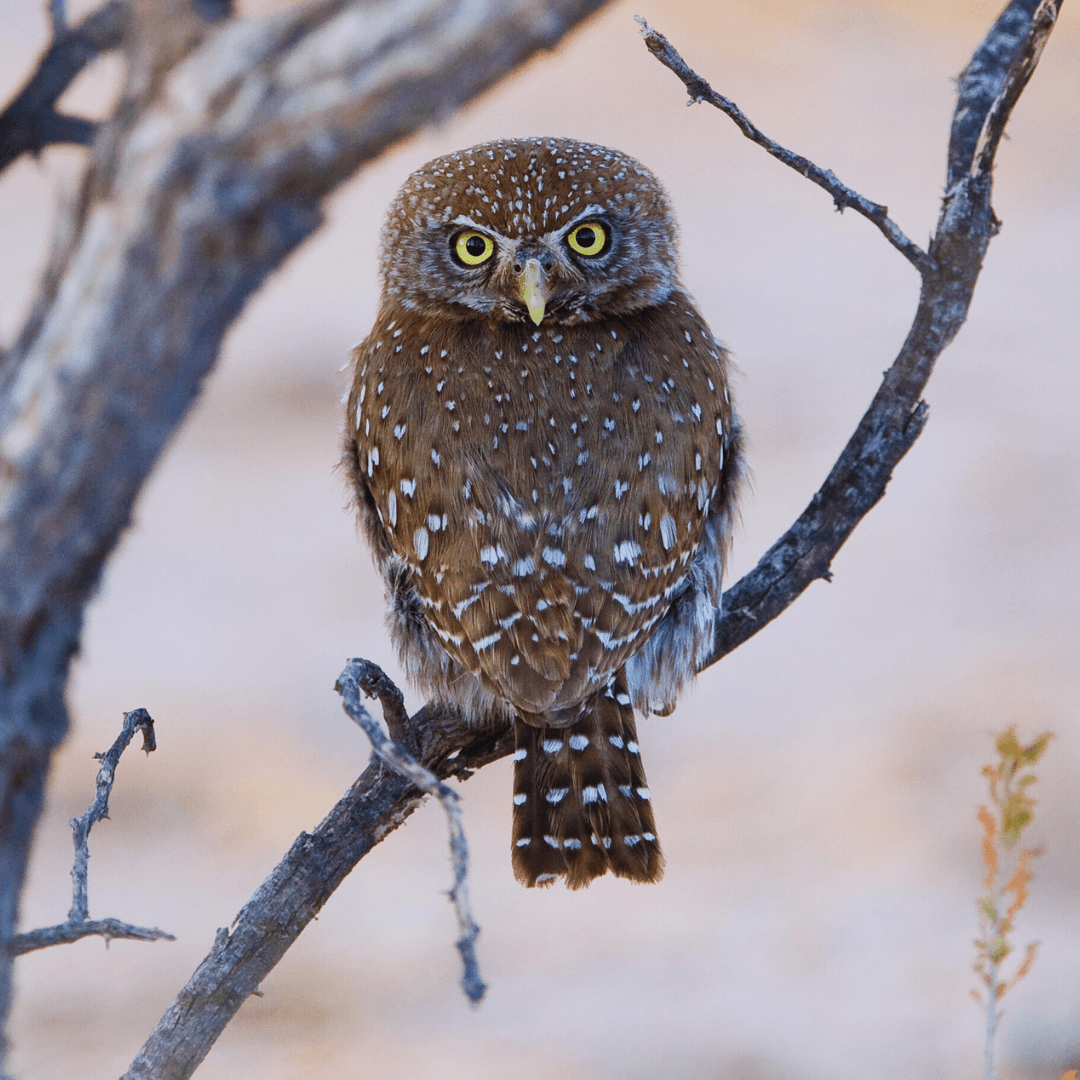
20. Blakiston's Fish Owl (Bubo blakiston)
The Blakiston's Fish Owl (Bubo blakiston) is a magnificent, elusive owl inhabiting Russia, Japan, and China's riparian forests.
Its size, thick plumage, and vivid orange eyes make it one of the largest owl species. Preferring remote riverine habitats, it's primarily nocturnal and hunts fish, amphibians, and small mammals along riverbanks.
Known for its deep hoots echoing through the forest, it is significant in indigenous folklore. Despite its adaptability to cold climates, habitat loss from logging, dam construction, and pollution poses severe threats.
Conservation efforts focusing on preserving riparian forests and reducing human disturbances are essential for the survival of this iconic owl species and its riverine ecosystems.
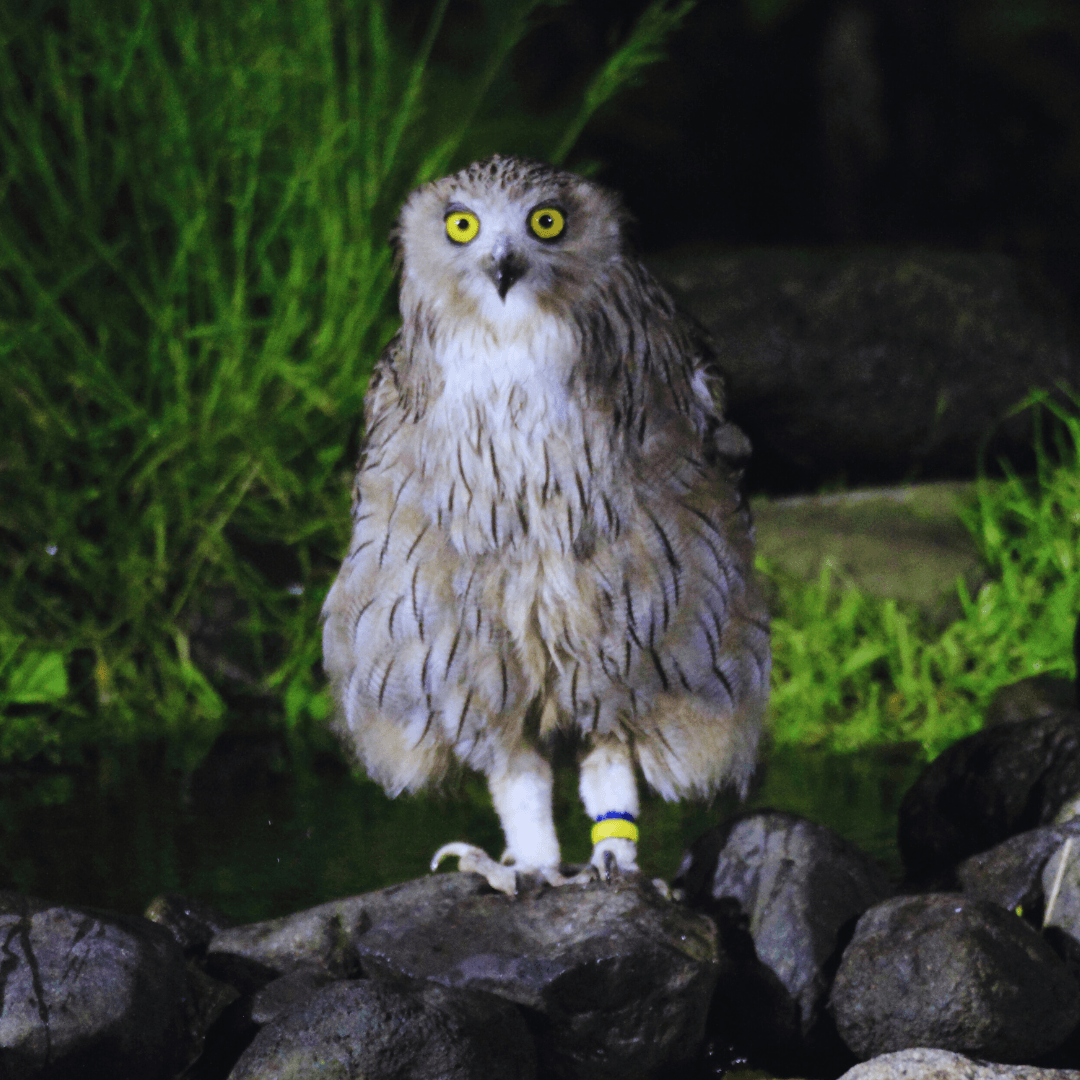
21. Australian Masked Owl (Tyto novaehollandiae)
The Australian Masked Owl (Tyto novaehollandiae) is an enchanting nocturnal hunter native to Australia and Tasmania.
Its pale plumage adorned with a dark facial mask creates a striking contrast, making it easily distinguishable.
Thriving in various habitats, including forests, woodlands, and coastal areas, this owl species emerges under the cover of night to hunt small mammals, birds, and insects.
Its haunting calls, echoing through the darkness, add an ethereal quality to the Australian landscape.
Despite its adaptability, habitat loss from urbanization, deforestation, and land clearing poses significant threats.
Preserving intact forests, safeguarding nesting sites, and minimizing human disturbances are crucial conservation strategies needed to ensure the enduring presence of this iconic owl species in its native habitat.
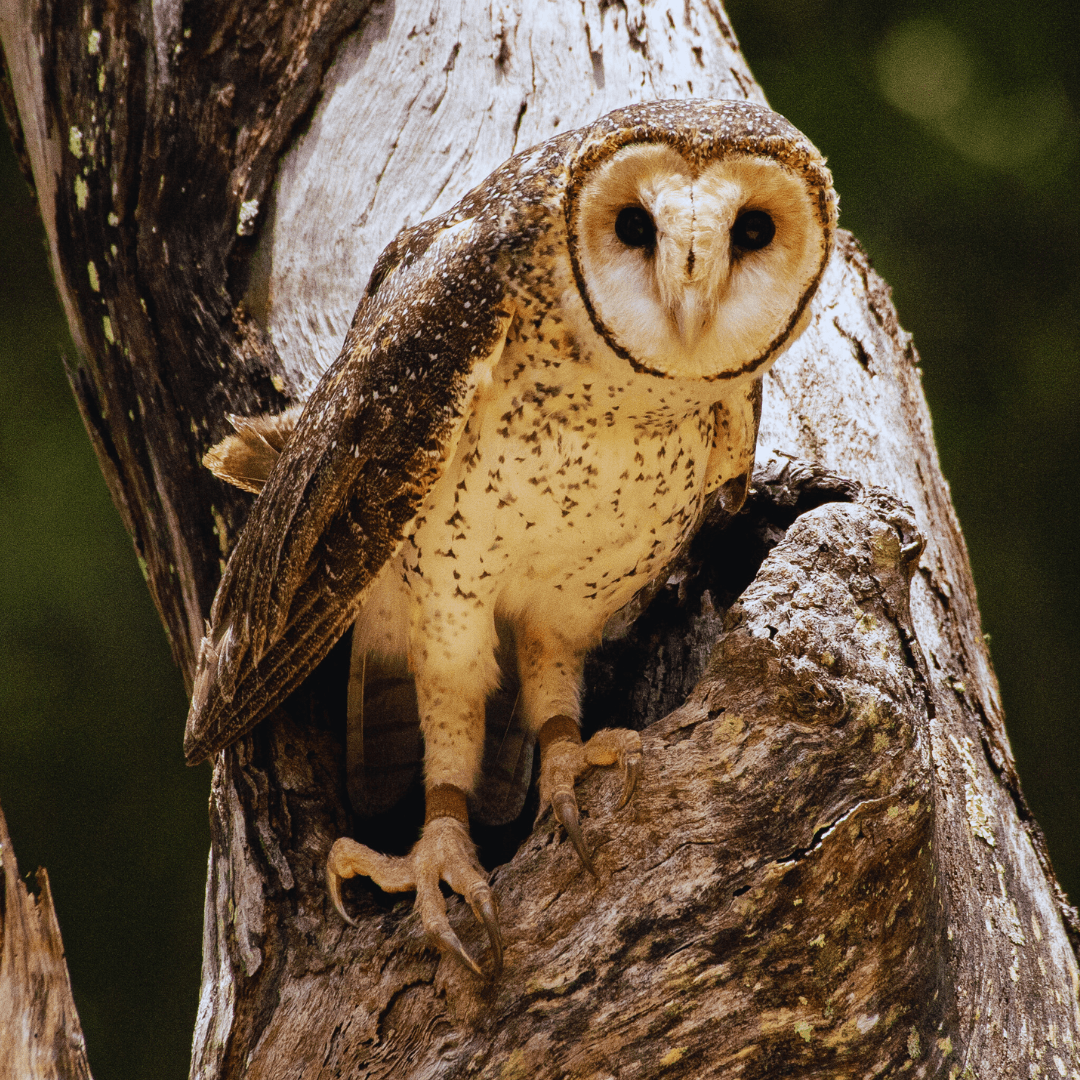
Conclusion
The world of owls is a testament to the marvels of biodiversity and adaptation. Through their specialized anatomy, nocturnal habits, and silent flight, they have thrived in diverse habitats of various species of owls, from desolate deserts to lush woodlands.
As symbols of wisdom, mystery, and beauty, these magnificent birds inspire wonder and fascination in people of all ages.
To secure their continued existence, owls must overcome several obstacles, such as habitat loss, climate change, and human disruptions.
For this reason, conservation activities are crucial. By comprehending and admiring the diverse range of owl species that adorn our globe, we may endeavour to safeguard these emblematic animals and the environments they call home for future generations.
Let us continue to marvel at the wonders of the owl world and work together to safeguard their future.
I trust you enjoyed this article in Discover The Diversity: Species Of Owls In The World. Please stay tuned for more blog posts soon. Take care!
JeannetteZ
Your Opinion Is Important To Me
Do you have thoughts, ideas, or questions? I would love to hear from you. Please leave me your questions, experiences, and remarks about this article, Discover The Diversity: Species Of Owls In The World, in the comments section below. You can also reach me by email at Jeannette@Close-To-Nature.org.
Disclosure
This post may contain affiliate links. As an Amazon Associate and other affiliate programs, I earn from qualifying purchases at no extra cost to you. Please read my full affiliate disclosure.
You might also enjoy these blog posts:
Interesting Facts About Hummingbirds
Your Essential Companion Planting Guide
Natural Fertilizer For Indoor Herbs





